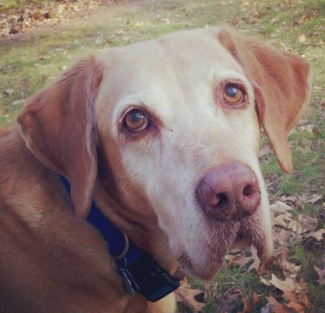
Lorrie Shaw | Contributor
We've a little experience with Canine Compulsive Disorder, or CCD, in our household, and sadly, with the dog's increasing age, I'm seeing that the condition can increase in complexity.
Early life stressors have been thought to be at the root: abuse, premature weaning, prolonged isolation and other stressful types of things.
A recent study offers interesting insight into the mechanics of the disorder, and it shows that humans and canines have more in common than you might think. The findings might even help find better treatments for humans and dogs alike.
The research, published in Neuro-Psychopharmacology & Biological Psychiatry, suggests a root cause that could help clarify a cause of the behavior.
In looking at brain scans of 16 Doberman pinschers (the breed has a high incidence of CCD) studied, researchers found that the eight dogs who had CCD had higher total brain and gray matter volumes and other similarities that correspond with the severity of compulsive behavioral traits and consistent with humans who suffer OCD-like symptoms.
CCD is characterized by behaviors such as tail and shadow chasing, spinning, excessive drinking of water, licking obsessively, snapping at flying insects (even when they are not present), continuous barking and pica.
The findings are a joint effort between veterinarians at the Cummings School of Veterinary Medicine at Tufts University and researchers at the McLean Imaging Center at McLean Hospital, in Belmont, Massachusetts.
Niwako Ogata, BVSc, Ph.D., an assistant professor of animal behavior at Purdue University College of Veterinary Medicine, led the Tufts/McLean research team.
"Canines that misbehave are often labeled as 'bad dogs,' but it is important to detect and show the biological basis for certain behaviors," noted Ogata.
"Evidence-based science is a much better approach to understanding a dog's behavior."
Nicholas Dodman, BVMS, DACVB, professor of clinical sciences at the Cummings School of Veterinary Medicine at Tufts University offered this:
While the study sample was small and further research is needed, the results further validate that dogs with CCD can provide insight and understanding into anxiety disorders that affect people. Dogs exhibit the same behavioral characteristics, respond to the same medication, have a genetic basis to the disorder, and we now know have the same structural brain abnormalities as people with OCD.
Click here to read a piece in the Whole Dog Journal on ideas to effectively address CCD, and food or thought on how to help prevent it.
Lorrie Shaw leads the pets section for AnnArbor.com. Catch her daily dog walking and pet sitting adventures or email her directly and subscribe to AnnArbor.com's email newsletters.